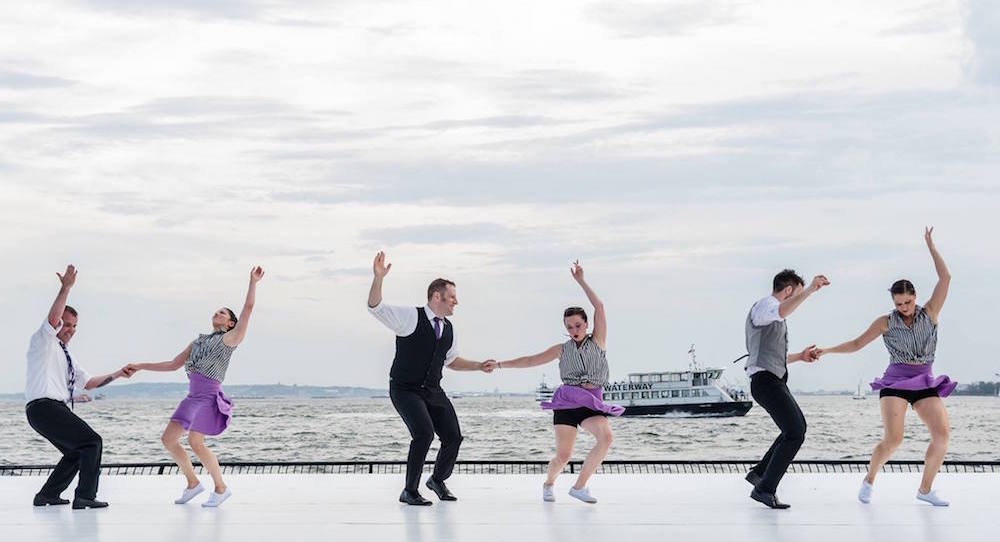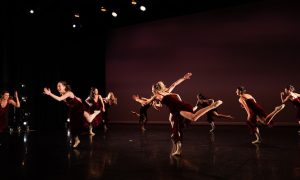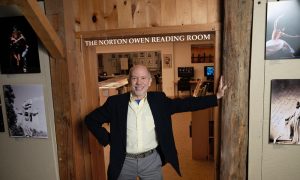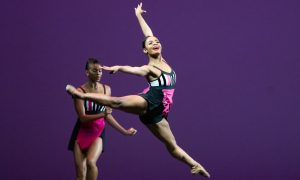What comes to mind when you hear “Kilowatt Dance Theater”? High energy, excitement and innovation for sure — but what style is the dance company? Jazz. Now, you might be confused to hear of a concert dance company focusing on jazz rather than ballet, modern or contemporary. But Kilowatt Founder Jaime Shannon is on a mission to remind audiences of the history, depth, musicality, emotion and artistry of jazz dance. Kilowatt Dance Theater specializes in early jazz styles like Lindy Hop, shag, Charleston and blues but fuses the classic social dancing with concert dance composition techniques and contemporary flavor. The company recently produced its first solo performance, and the dance community is all abuzz about this inventive and electrifying jazz choreography on the concert stage.
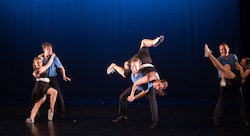
Kilowatt Dance Theater. Photo by Alessandro Casagli.
Dance Informa had the opportunity to speak with Shannon about the history of the company, the importance of presenting jazz on the concert stage, and how classically trained dancers should step outside their comfort zones and take social dance classes.
When did you found Kilowatt Dance Theater?
“My background is modern, contemporary and ballet. I met Tony Fraser in 2010, and he offered to train me as his swing dance partner. We’ve been working together ever since, making a lot of pieces of choreography for swing dance events and competitions, but nothing specifically generated for the stage. I kept talking to him about my dream to mix concert dance with swing vocabulary and really make the two come together. So we reached out to Jacob’s Pillow to see if we could get to participate in the Inside Out series, and in 2014, they invited us to perform! That was what I consider the start of the dance company because once we got the opportunity to perform at the Pillow, that’s when I started creating work that fused concert dance techniques with swing dancing.”
And where did the name come from?
“That’s kind of a funny story! Before I even started the company, Tony and I competed at the International Lindy Hop Championships in Washington, D.C. Since it was a competition, we needed to come up with a name. One day in rehearsals down in Hell’s Kitchen, Tony was wearing a t-shirt that said ‘Kilowatts’, and one of our dancers thought that was cool. So just like that, we became ‘The Hell’s Kitchen Kilowatts’. I never intended to name my dance company that, but when Jacob’s Pillow invited us to perform, that’s the only name we had! I eventually tweaked the name to sound more like a dance company — Kilowatt Dance Theater. It just felt right to keep the ‘Kilowatt’ name, and the word itself implies a lot of energy and intensity — and mystery in the sense that the name makes you want to know more.”
What are the mission and the goals for the company?
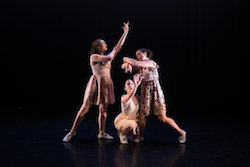
Kilowatt Dance Theater. Photo by Alessandro Casagli.
“Coming from a classical dance background, once I started exploring swing dancing, I realized that there is a lack of jazz dance in the concert world. When we go to see concert dance, we automatically think of ballet and modern because those are the most ‘artistic’ styles. Jazz is played down as a dance form, but there is just as much history and emotion and storytelling in the style. It almost made me a little upset that jazz dance is seen as entertainment more than artistry. So I really wanted to challenge that by taking the composition techniques from the concert world and applying them to swing dance to try and remind audiences of the depth, history and feeling of jazz.”
How do you blend old-school jazz styles (Lindy Hop, swing, Charleston, blues) with contemporary flair?
“It’s an exciting challenge. I’ve found that these styles have more in common than people realize — because swing dance was born out of an improvisation to jazz music, and so much of contemporary dance uses the same idea of improvising to express emotion and manifest music. As a result, I found it really natural to work the two together. Swing dance was always something organic — changing with the music and the times. So adding and mixing and fusing styles is fitting with what jazz is all about.”
These swing styles developed primarily as social dances. What are the challenges of making social dance performative (more ‘frozen’ choreography in front of a seated audience)?
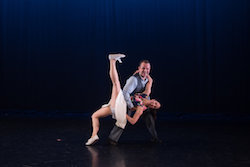
Kilowatt Dance Theater. Photo by Alessandro Casagli.
“I definitely strive to preserve the authenticity of the styles. And yes, so much of that is based on improvisation. I use a lot of improv techniques in my choreography (along with setting exact choreographed phrases). I may give a couple a ‘structured improv’, where I ask them to use Lindy Hop movement in so many phrases of music to travel from one side of the stage to the other. They’ll have a structure, but I’ll let them use the music and their partnership to create a pure and organic social dance across the floor.”
Swing styles have gained popularity thanks to television shows like So You Think You Can Dance and Dancing with the Stars. Do you believe this is positive visibility for the art form?
“We have to remember that these dancers are often learning the style in just a matter of days, so we can’t expect technical perfection. But I do think it is fantastic that swing dance is getting this kind of exposure on such popular national television shows that reach audiences who might not be very familiar with the style.”
Can you tell us a little bit about your classes in downtown Manhattan?
“Our drop-in classes on Wednesday nights are mainly advertised to the swing dance community here in New York City. But I certainly welcome classically trained dancers who are interested and excited to learn this new style because I know that they will be able to pick it up more quickly than a complete beginner, especially when partnered with a seasoned swing dancer. Tony and I teach a two-hour class. The first hour is intermediate-advanced Lindy Hop, and the second is Collegiate Shag, which is another style of swing dancing that was extremely popular in America in the 1930s.
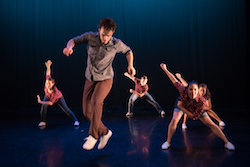
Kilowatt Dance Theater. Photo by Alessandro Casagli.
New York is an incredible hub for swing dance. here are so many classes, workshops, competitions, events and parties happening every day. It might seem like a different scene from other dance communities, but if you look for swing dance (no matter what country or city you live in), you’ll be able to find it.”
Partnering (especially social, improvised partnering) is an incredible (and sometimes intimidating) talent. What advice do you have for dancers who hope to hone this skill?
“I was a classical dancer my entire life from the time I was four years old. I didn’t start dancing swing until I was in my 20s. But one of the things that attracted me to it was that I felt like ‘day one’ beginner! My first class was scary and humbling and exciting because I knew I was going to learn something entirely new. That’s something I wish for other classically trained dancers — that they aren’t afraid to take that leap and try something out of their comfort zone.
As classically trained dancers, we’re asked to take a variety of styles and go into the classroom and pick up whatever choreography is presented to us. But with swing dance — and most social dances — there’s a completely different science of improvisation and partnering. It’s not the same as ballet pas de deux or modern dance contact improvisation. It’s the balance of leading and following…in the moment. In fact, most people nowadays don’t know how to lead/follow because it’s just not how we dance socially anymore. But when I first learned the technique, it transformed me as a dancer and affected how I dance other styles as well. It opened my eyes to different ways of moving and different opportunities to work with people.”
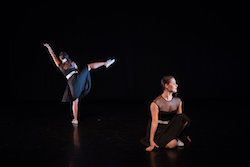
Kilowatt Dance Theater. Photo by Alessandro Casagli.
Where can we catch a performance?
“We’ve done a lot of performances at festivals in the past, but in September, we produced our own show at Manhattan Movement and Arts Center. The next performance Kilowatt has will be with Jazz Choreography Enterprises at Peridance later this month. Besides that, we will continue planning more choreography and shows, and we are excited to see what’s next for us!”
Kilowatt Dance Theater will perform as part of the New York Jazz Choreography Project, held Saturday, October 28-Sunday, October 29, at the Salvatore Capezio Theater at Peridance. For tickets and more information, visit www.jazzchoreography.com.
By Mary Callahan of Dance Informa.


